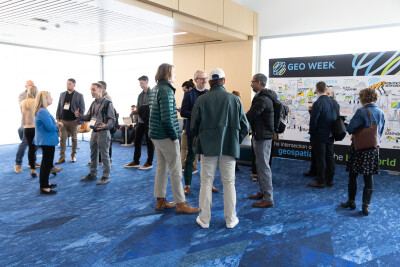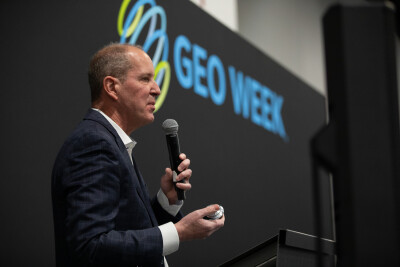Many know “open source” as a term for software that makes its code accessible for users to share and modify. However, in recent years the idea of open source—and the expanded access to intellectual property that it entails—has moved beyond the software world, spreading as far as architecture. Though this industry has historically been averse to sharing intellectual property and innovations, there is a growing sense among practitioners that it can’t afford to stick with the closed distribution models of the past if it wants to ensure its own survival in the future.
To find out why, I caught up with a few leading architects for a quick chat. We discussed how adopting open source models can reinvigorate the practice of architecture, all the challenges the industry will face in the process of making such a big change, and why the stakes are actually much bigger than the survival of the profession itself.
This conversation has been edited for brevity and clarity. Before you dig in, here are some quick bios. Click on the names to find out more.
Stephen Hagan is an industry expert on technology innovation, real estate, and the construction marketplace. After serving for 37 years in the federal government, Stephen is currently acting as president of Hagan Technologies; consulting about BIM, innovation, and online technologies; and serving as a member of the AIA Documentation Committee.
Kimon Onuma leads a team of architects and computer scientists at Onuma, Inc, developers of the ONUMA system, a web-based BIM that connects data across the lifecycle of a facility.
Dennis Sheldon is the director of the Digital Building Lab and associate professor at Georgia Tech. He led the development of Frank Gehry’s digital practice as director of R&D from 1997-2002 and co-founded Gehry Technologies, a building innovation company. He is an expert in applications of digital technology to building design, construction and operations.

Sean Higgins: Let’s start by talking about open source more generally. What does open source mean to you in the context of architecture and design?
Dennis Sheldon: What’s interesting about the open-source model is that it’s actually a service model, and it’s a way of generating services opportunities off of what looks like a product. I think that’s a valuable possibility for consultancies, like architecture firms, that generate intellectual property but don’t quite know how to monetize it.
The basic idea is that successful open-source companies are able to organize a community around the development of the technology, and leverage the interest of the community. The way they make money is typically by providing or offering expertise. If you look at Red Hat in the Linux space, the way to make money is—yes they ship some disks, but basically they are consultants for advanced Linux implementations.
And this kind of model is rare, or unheard of, for architects to adopt?
Dennis Sheldon: There are not a lot of examples where architects have taken innovations, or intellectual property they’ve developed, and really filled out an open source model in that sense. But a lot of architects do generate innovation, they just try to squirrel it away and not tell people what they’re doing, or they just give it away.
As the AEC industry evolves, it’s interesting to think about not just opportunities for architects to get into the business of software, but for them to get into the business of monetizing intellectual property. I think it’s an interesting question whether or not open source could be a model for doing that without meaning that architecture consultancies transition into being product companies.
It sounds like open source models can be a viable option for consultancies to monetize their innovations—even if they’re sensitive to giving away their IP.
Dennis Sheldon: There is opportunity that can be generated by actually distributing intellectual property. That’s true even if you’re not doing classic licensing, and even if there’s nothing that would be appropriate to license. But it does sort of create its own question, which is: What is it on the spectrum of architectural innovation that would fit this kind of model?
I also think the very nature of competitive advantage through innovation creates more questions: Are you better off protecting innovation, or distributing it and creating a community that that generates opportunity for you?
Kimon and Stephen, what do you think about the questions that Dennis is posing? Given those challenges, would you say that open source is a viable model for architecture and design?
Stephen Hagan: I think it is viable. I think there’s a misunderstanding that open source means you do something for free. To me, that is not a viable way to proceed because you can’t get really talented people to work hard without some sort of compensation. And I think you also have to protect your IP, even if it is open source.
Do you any of you have thoughts about how you would protect your IP while still putting an open-source model in motion?
Dennis Sheldon: Open source has a model for that already: copyright. If you use the open source technology, then you use it according to certain rules. The spectrum of what you’re allowed to do is everything from “use it without warranty” to “if you use it, then everything you do with it must be open source, too.”
Again, I think the real interesting questions are: What are the non-software kinds of innovations that could be—whether through an open-source model or not—deployed in a scalable way where you’re not selling it directly or providing some kind of license.
 Kimon, during a recent AIA panel you suggested that the information that comes from a building project is hugely undervalued. Do you think that this information could be a candidate for sharing within an open-source framework?
Kimon, during a recent AIA panel you suggested that the information that comes from a building project is hugely undervalued. Do you think that this information could be a candidate for sharing within an open-source framework?
Kimon Onuma: As architects, we’re wired to design and deliver the design documents, but the actual data and information inside as part of that process—the reason of why we built that—is of value too. It gets left behind in most cases because we just have the physical building to deliver at the end and then we walk away from it. We’re losing the IP, essentially, that went into making those decisions and we’re kind of holding that back.
Like Dennis said, there are ways of protecting that IP and defining what others can use. If we can protect our ideas, then I think we can monetize that and say: If we share it like this, then there’s value to it and we can generate value with open source delivery.
I’d like to take a turn here and ask—Why is open source coming up in architecture now? What is the relevance to the profession?
Dennis Sheldon: When we were speaking at that AIA panel, the interviewer, Wanda Lau, came to the same question. I think—I don’t know if it’s a Trojan Horse—but it’s an example of the kind of emerging mechanisms that should allow innovation in an industry that is thirsty for it, and has not exhibited much commercializable innovation, but certainly does innovate all the time. So open source seems to be the interesting model that people reach for when they try to figure out how people can innovate differently in this industry, and it turns out that it’s one model, but isn’t necessarily the only model.
Kimon Onuma: Another part that I think is critical is that, as the complexity of the industry increases and the need to connect different systems—as we go into the Internet of Things, for example—we need to ask: How are things getting wired together? It’s not going to work the way we have are now, where things are locked down and proprietary and you can’t get to the information. So that’s another reason to think in terms of, How do we how do we have a controlled way of sharing?
Also, last week, we had an interesting webinar where we discussed how Bitcoin and blockchain are being used for creating contracts. We talked about the transparency of that, and the fact that it’s built on open-source tools, and how that’s changing contracting. There was even a discussion where we compared the blockchain approach to the old way of doing contracts, documents, and agreements. This open-source technology has the potential to change the definition of what we own, what we are contracted to do, whether we are following through on it, and how we interact with others that we’re delivering to. So I think it is important to point out the things that are happening around us, outside of the typical AEC bubble, that have the potential to have a huge impact on us. We need to plug into them.
Can you give me a big picture explanation of what’s at stake here if AEC doesn’t come out of its bubble and get a handle on new technological ideas like open source?
Dennis Sheldon: That’s an easy one: The survival of the profession is at stake. I think these questions are about business models in an economy that is fundamentally driven, and accelerated, and disrupted by these kind of technology trends. You know, I think the AEC profession is not a safe haven from innovation and disruption any longer. There is a pervasive sense that the building and construction industry is slow and backwards and in some ways it’s safe because of that. But I don’t know that you can continue to do things the way and you will be fine. And I think you know quite a few of us believe that, not only are there opportunities to do things differently, but there are also imperatives and risks with not seeing how these technologies, innovations, and paradigms play out.
It’s an excellent example that Kimon raised, where contracting could be fundamentally changed and that people will be scrambling to figure out what it means for their practices. So trying to stay abreast of innovation broadly, and what it means to our industry is a good thing for everybody.
Kimon Onuma: AEC-ST would be an interesting place to really push that. This is an opportunity to help the disruption happen faster—and I think it needs to happen faster because what’s at stake is the industry, but I truly believe that if we don’t solve these complex problems then the planet is at stake.
We need to become more efficient and improve sustainability, and these lofty goals are not going to happen without us wiring all of this together and making it work. It’s not going to happen the old way. Is not going to happen the old contracting ways, it’s not going to happen the way we protect our designs. All that stuff needs to open up.







